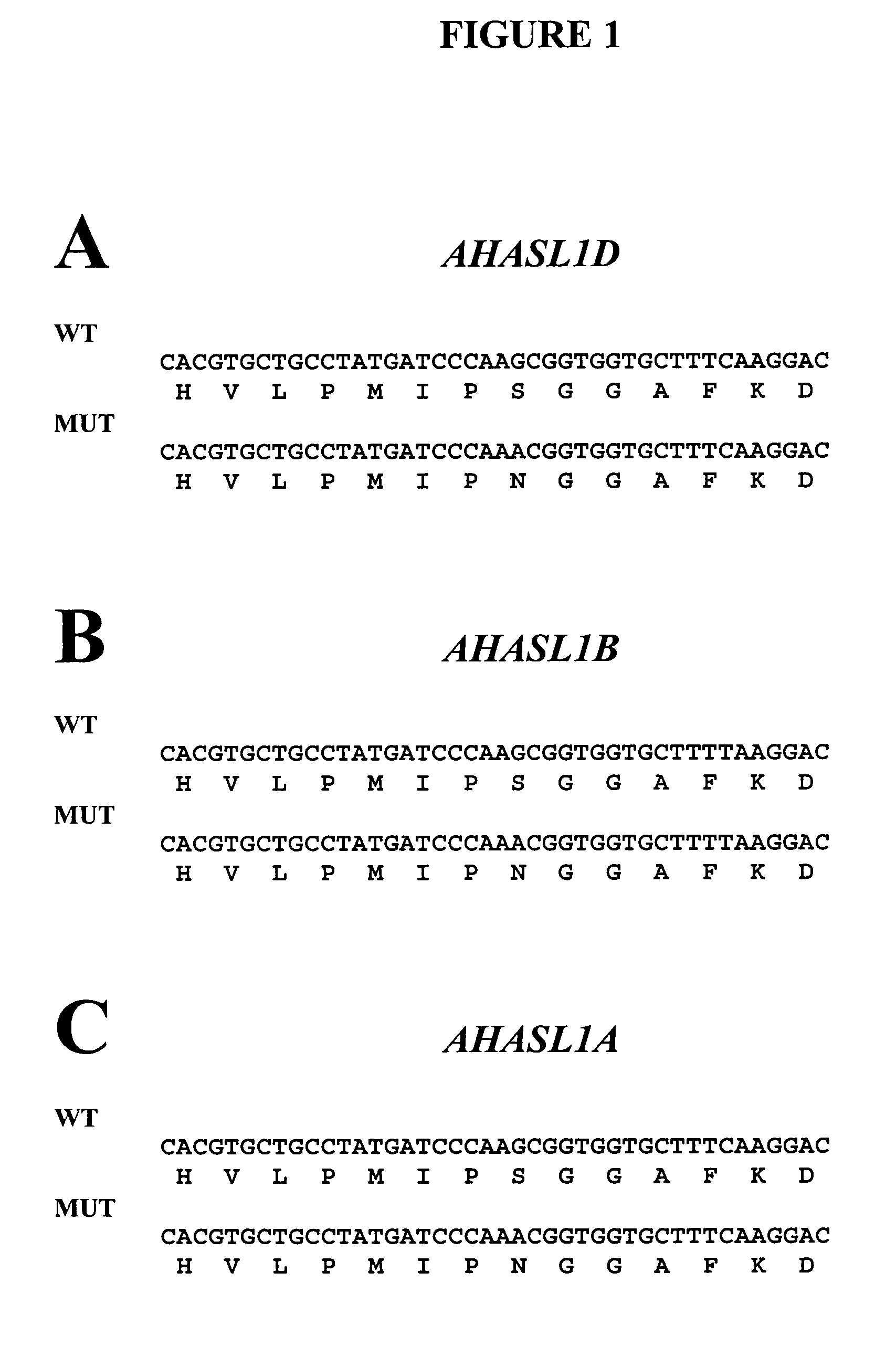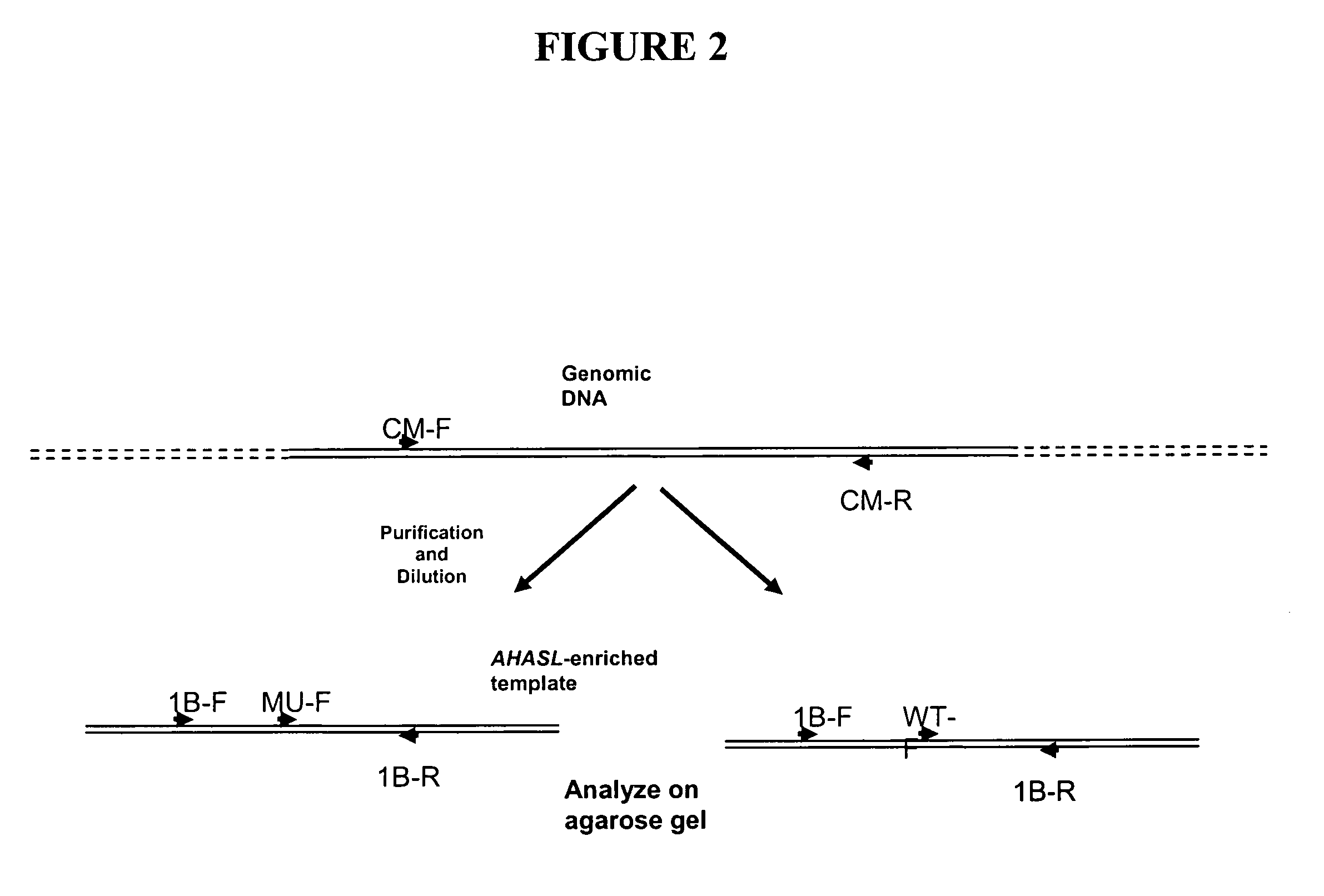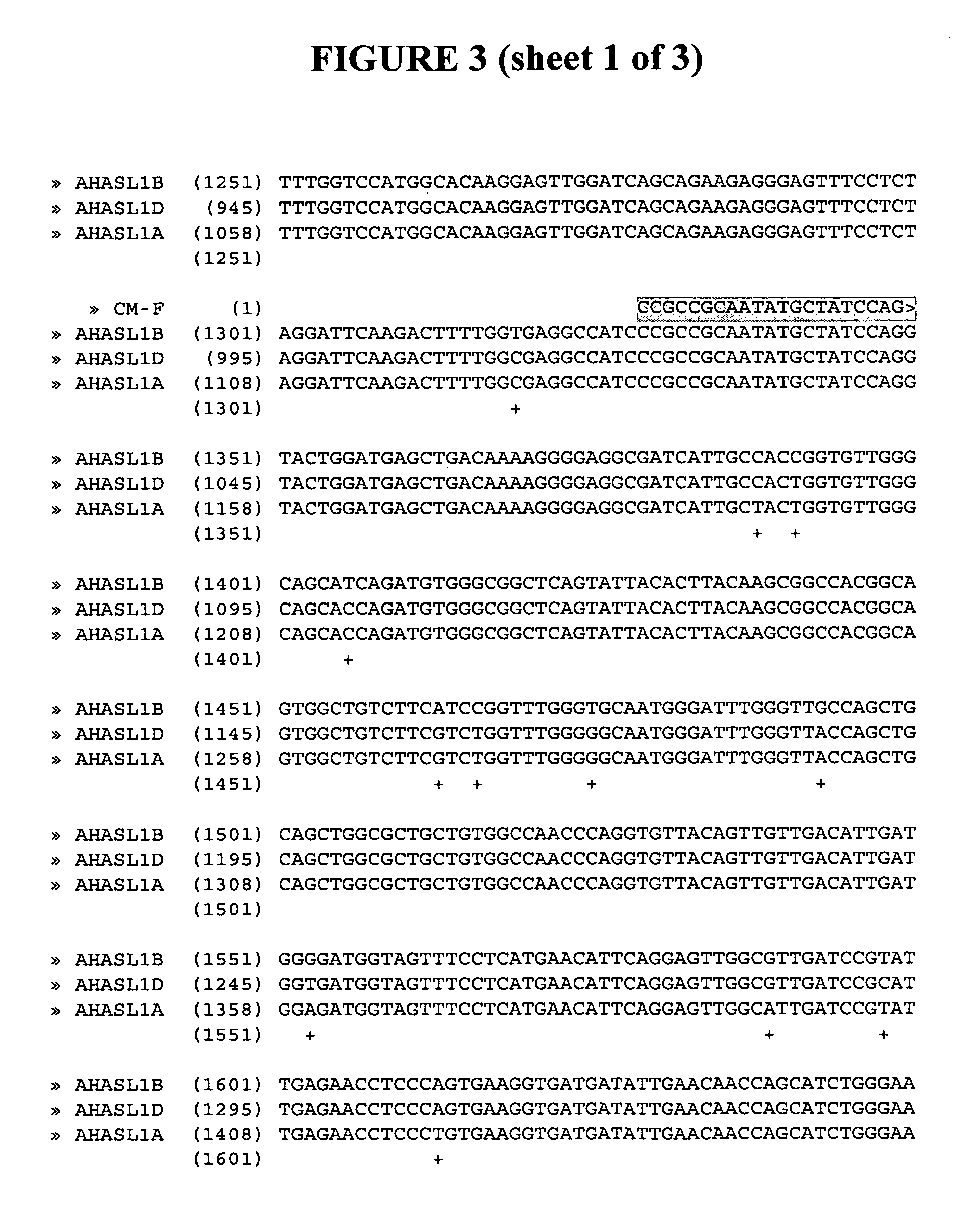Methods and compositions for analyzing AHASL genes
a technology of ahasl gene and a composition, applied in the field of gene analysis, can solve the problems of inability to analyze large numbers of samples, time-consuming methods, and inapplicability of dna-sequencing-based methods to detect wheat plants with imidazolinone toleran
- Summary
- Abstract
- Description
- Claims
- Application Information
AI Technical Summary
Benefits of technology
Problems solved by technology
Method used
Image
Examples
example 1
The AHASL Genes of Wheat
[0112]Three acetohydroxyacid synthase large subunit (AHASL) sequence variants were identified from sequencing of wheat cDNAs. The genes corresponding to these variants were mapped to their respective genome and chromosome arm (6L) and were named on the basis of the genome in which they reside (e.g., AHASL on genome A=AHASL1A). Nucleotide sequences for multiple varieties of Triticum aestivum AHASL1A, AHSL1B and AHASL1D transcripts were obtained. These sequences comprise the full coding sequences for the mature polypeptides. See, U.S. Application entitled “Polynucleotides Encoding Mature AHASL Proteins For Creating Imidazolinone-Tolerant Plants”, filed concurrently herewith, herein incorporated in its entirety by reference.
[0113]A comparison of imidazolinone (IMI)-tolerant mutant varieties with wild-type progenitors revealed that the most common type of mutation was a G-to-A transition, which produces a serine (S) to asparagine (N) substitution in a position co...
example 2
A Rapid Method for Distinguishing the Wheat AHASL Genes and Their Respective Alleles
[0114]To facilitate the rapid identification of S653(At)N mutations in wheat, methods for allele-specific PCR assays for mutations in each of the three AHASL genes were developed. The IMI-tolerant varieties used for the assay development are set forth in Table 1.
[0115]
TABLE 1Wheat Lines Used for Assay DevelopmentWheatMutatedOldLineGeneDesignationCV9804TaAHASL1DALS1G-208TaAHASL1BALS2K-42TaAHASL1AALS3KrichauffNoneNA
[0116]From the nucleotide sequences of the mutant and wild-type wheat AHASL genes, a method involving a set of six allele-specific PCR assays for high-throughput genotyping of bread and durum wheat lines containing the S653(At)N mutation was developed.
[0117]The assays were designed as allele-specific PCR methods using a pair of primers, in which one primer is specific to the allele (mutant or wild type) and the second specific to gene (AHASL1D vs. AHASL1B vs. AHASL1A). Adding a second gene-s...
example 3
Analysis of the AHASL Genes of Four Wheat Genotypes
[0122]A sample containing wheat genomic DNA is obtained by any method known in the art for purifying genomic DNA from plant tissues, particularly wheat. However, when comparing two or more wheat plants, an equivalent amount of tissue from each of the plants should be used for the purification of the genomic DNA so as to ensure that samples from each of the plants will contain similar concentrations of genomic DNA. Typically, the DNA concentration of the sample is about 100 ng DNA per μL. If the DNA concentration is greater than this range one should dilute the sample to about 50 ng DNA per μL. While the method of the invention does not depend on a particular DNA concentration, the DNA concentration of the sample is preferably between about 5 and about 100 ng DNA per μL.
[0123]The first-round PCR amplification was performed using the Expand High Fidelity PCR System (Roche Applied Science, Indianapolis, Ind., USA). A first round PCR re...
PUM
| Property | Measurement | Unit |
|---|---|---|
| concentration | aaaaa | aaaaa |
| temperature | aaaaa | aaaaa |
| temperature | aaaaa | aaaaa |
Abstract
Description
Claims
Application Information
 Login to View More
Login to View More - R&D
- Intellectual Property
- Life Sciences
- Materials
- Tech Scout
- Unparalleled Data Quality
- Higher Quality Content
- 60% Fewer Hallucinations
Browse by: Latest US Patents, China's latest patents, Technical Efficacy Thesaurus, Application Domain, Technology Topic, Popular Technical Reports.
© 2025 PatSnap. All rights reserved.Legal|Privacy policy|Modern Slavery Act Transparency Statement|Sitemap|About US| Contact US: help@patsnap.com



